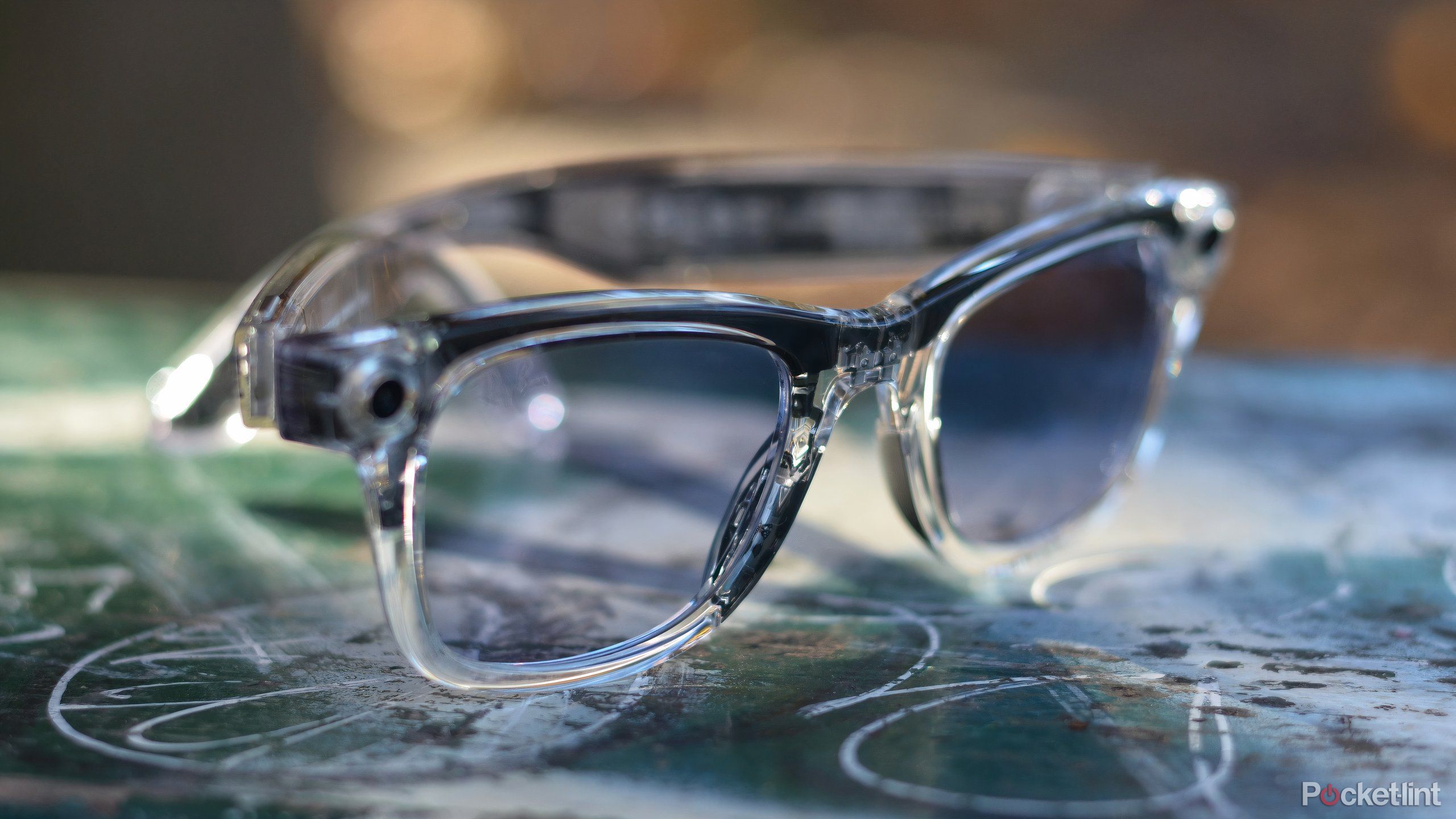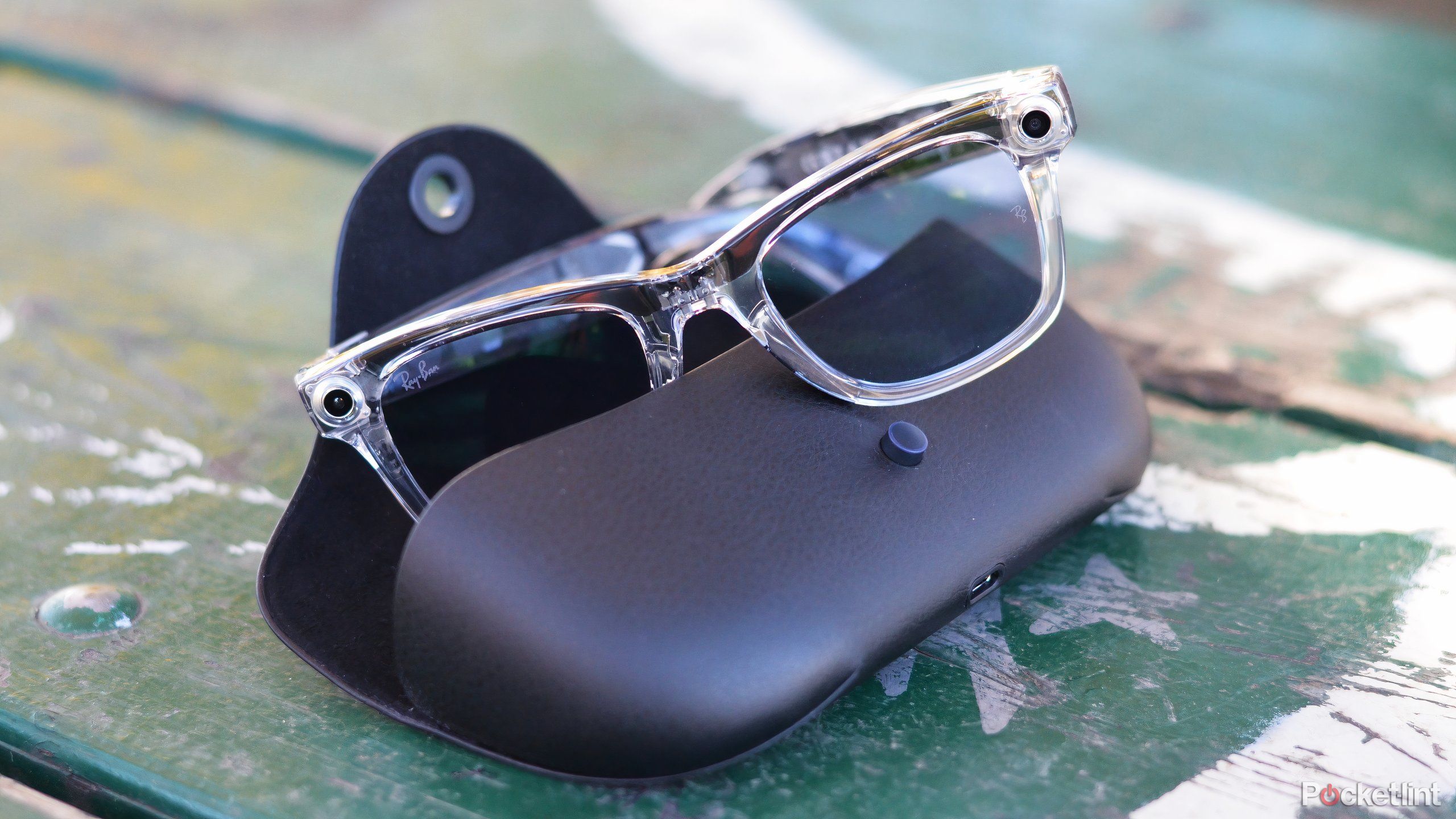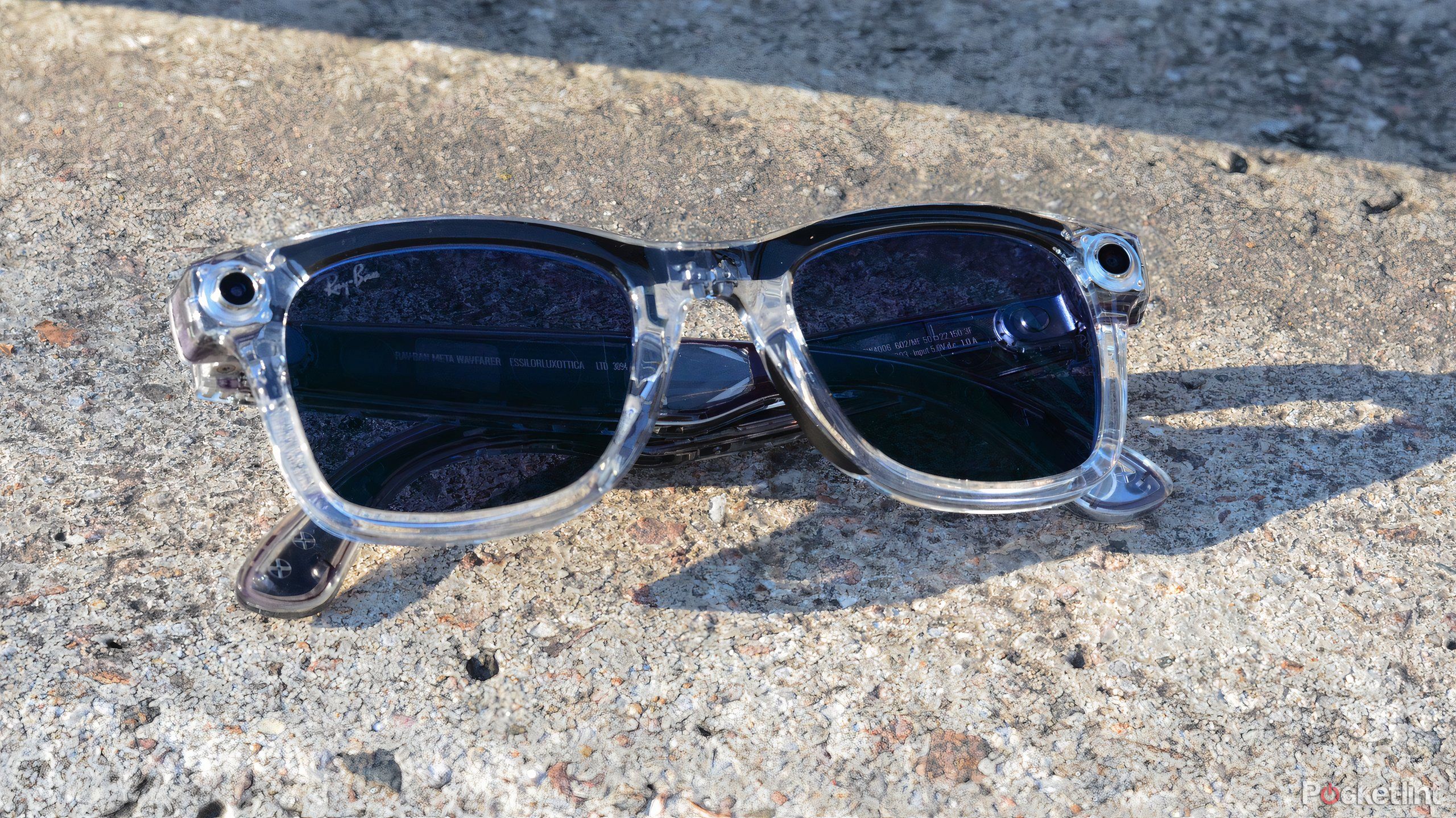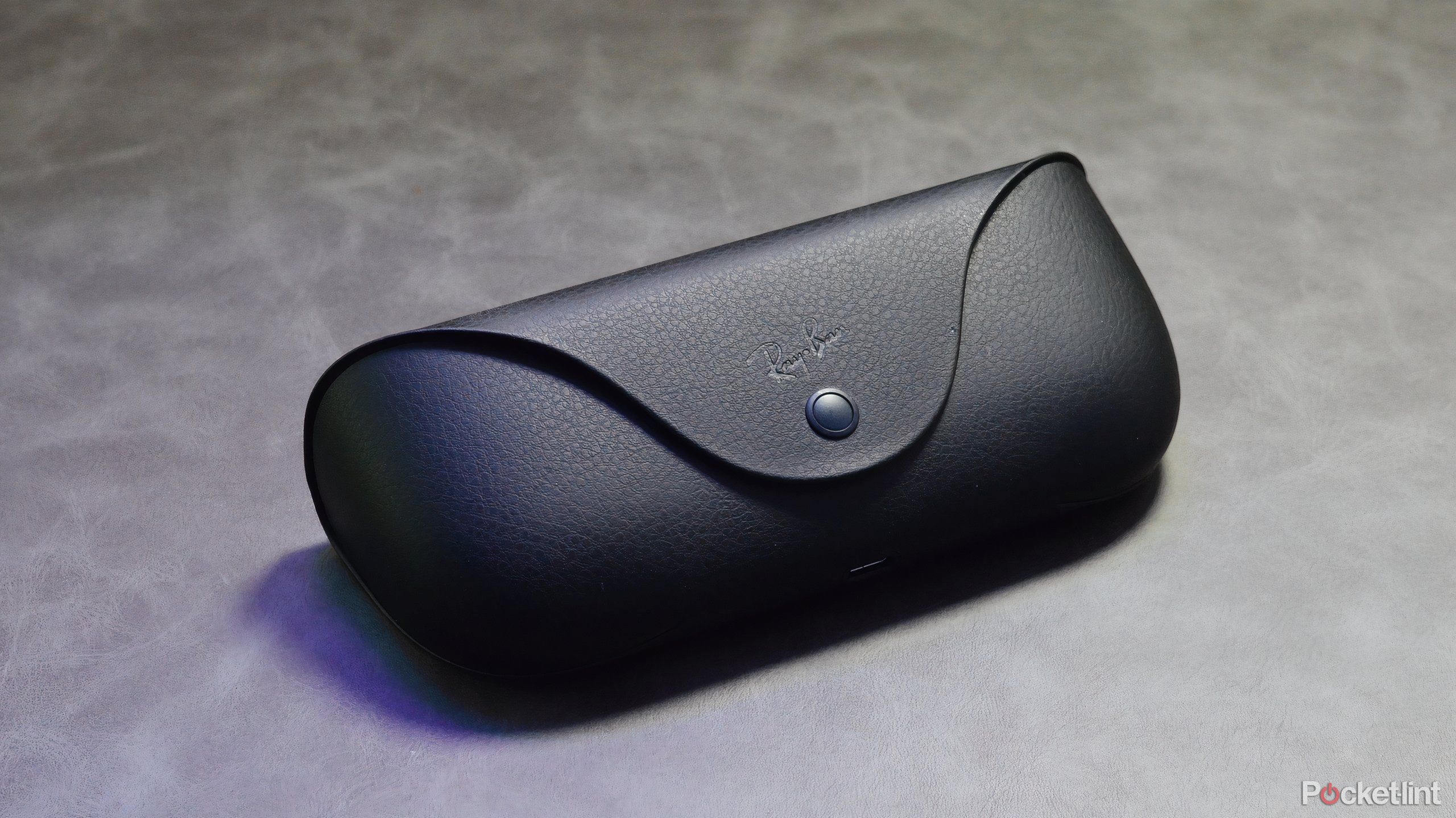Key Takeaways
- Meta Ray-Ban smart glasses offer hands-free calling and novel photo/video functions, backed by Meta’s AI capabilities.
- Priced at $299, they feature a lightweight design, a 12-megapixel camera, open-ear speakers, and a stylish leather charging case.
- Despite some learning curves and AI speed issues, Meta Ray-Ban is considered the standard for smart glasses in 2024/2025.
One of the emerging pieces of technology that’s captured my attention this year is smart glasses. Meta is becoming a leader in this space, taking up a lot of mindshare with its collaboration with Ray-Ban. Using Ray-Ban’s stunning collection of designs, Meta integrates a small collection of novel innovations, making for a fairly compelling device that genuinely justifies its place on the market.
Meta’s Ray-Ban look quite elegant, and I’m willing to wear them outside in a public setting. They’re also complimented with an array of staples that I’d expect from a pair of smart glasses. Meta leverages its knowledge in communication and content creation by offering hands-free calling and a unique take on capturing photos and video. Supplementing all of this, Meta AI is now available to use with image recognition. There’s plenty Meta can address and refine in the future. As it stands, however, Meta’s Ray-Ban is the standard of what I expect from smart glasses.
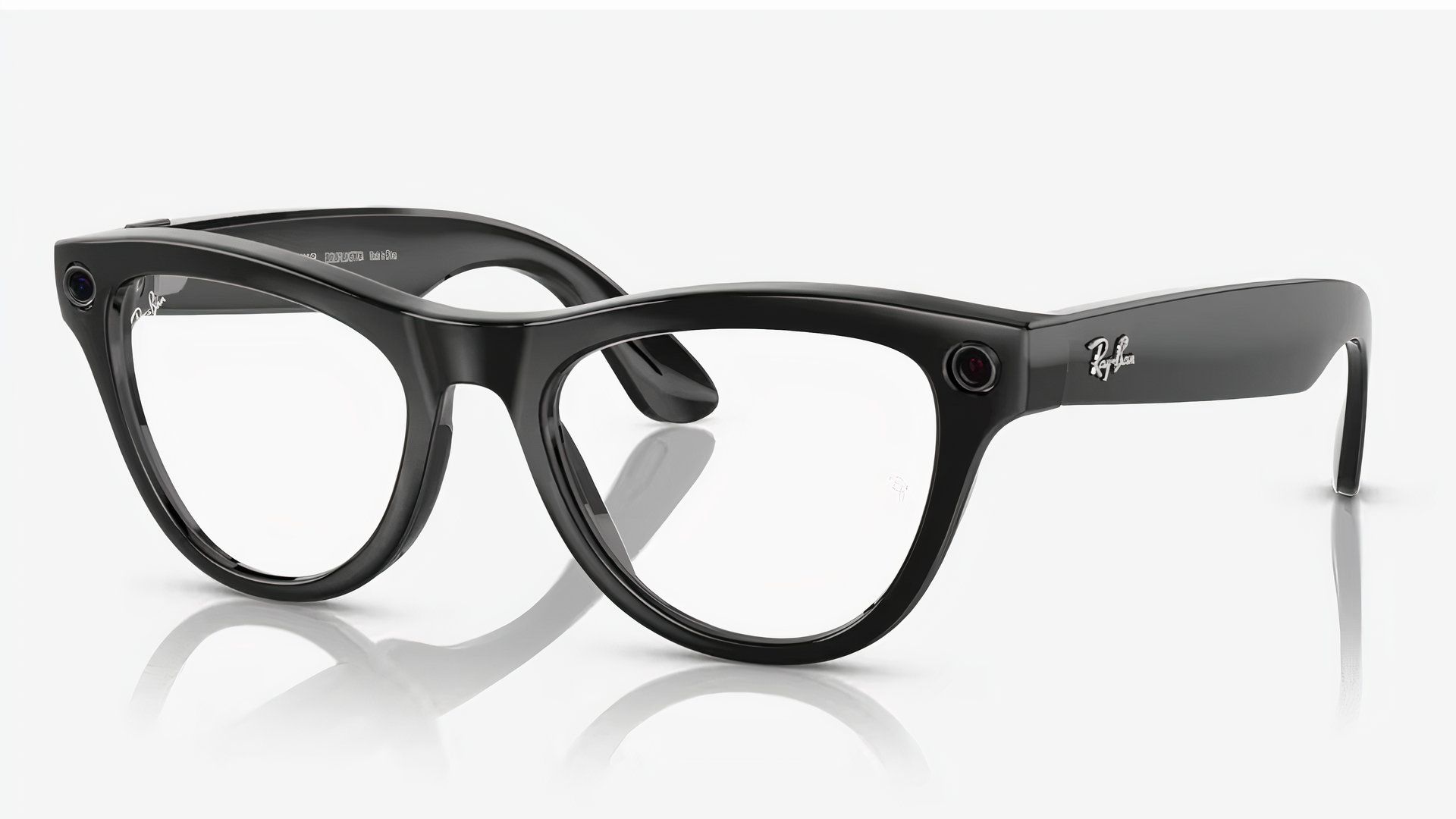

Recommended
Meta Ray-Ban
Meta Ray-Ban are a cutting-edge pair of smartglasses. Designed with three distinct frames, Meta integrates, hands-free calling, audio playback, and content capture using the 12-megapixel camera. Thanks to a recent update, Meta Ray-Ban also supports Meta AI’s image recognition.
- Lightweight and fashion-forward frames
- Hands-free content capture
- Meta AI voice assistance
- Photo quality isn’t the best
- Processing power is sluggish

Related
How we test and review products at Pocket-lint
We don’t do arm-chair research. We buy and test our own products, and we only publish buyer’s guides with products we’ve actually reviewed.
Price, availability, and specs
Meta Ray-Ban has been on the market for a little over 13 months at this point. Available in many global markets, the second generation of the former Meta Smart Glasses was made possible thanks to a close partnership with Ray-Ban. The well-known glasses maker offers three of its most popular frames, including Wayfarer, Skyler, and Headliner. Earlier this year, Meta Ray-Ban added a transparent model to the Wayfarer series. I’m a sucker for transparent technology, so I had to see these frames in person. Customers can select transition lenses, tinted UVA lenses, and even include their prescription. Meta Ray-Bans start at $299.
Meta’s Ray-Ban are fairly lightweight and sturdy. Built into each pair is a 12-megapixel camera lens, capable of shooting up to 1440p video at 30fps. Mileage on photo and video quality will vary based on environmental conditions. However, it provides a unique perspective to videos. There’s an onboard button used to snap a quick photo. With a long press, Meta Ray-Bans will begin taking a video of up to 30 seconds in length. The smart glasses provide 32GB of flash storage to store upwards of 100 videos and or over 500 photos. With connectivity through the Meta View app, you can view and save all content to your iPhone or Android device.
With hands-free calls and the ability to listen to music, Meta Ray-Ban supports a five-microphone system (two on each arm and one on the nose bridge). There are also two custom-built open-ear speakers. With these, you can receive calls through Messenger and WhatsApp. The smart glasses also support messages where Meta AI can read texts sent to you. You’re able to reply, and Meta AI will translate what you say to text. Meta Ray-Ban supports a four-hour battery life (depending on use). However, this can be extended to upwards of 32 combined hours when using the stylish leather charging case.

Related
Meta’s Orion wants to bring us one step closer to true AR glasses
The company says that its Orion AR glasses have been in development for over 10 years.
Hands-free content capture with Meta Ray-Ban feels unique and exciting
This year, I’ve been putting more time and effort into content creation. Meta Ray-Ban offers an intrinsically unique way to capture photos and videos, setting itself apart from a phone or camera. Using Meta Ray-Ban, videos offer a more intimate POV from the creator. It’s as if you’re opening the door and letting the viewer step into your shoes. I’ve been having fun shooting short videos while I’ve been walking around the bustling streets of Toronto. The camera adjusts with every tilt or swivel of my head, following my eyeline. With built-in voice assistance, I can even initiate video recording hands-free in case I’m carrying a coffee and a bag in my hand.
Impressively, it can analyze my cat, run the image through Meta’s Llama series of large language models (LLMs), dictate what my cat looks like and what it’s doing. Meta AI can also set reminders so if I run out of cherry tomatoes while cooking, it’ll remind me to purchase more.
Hands-free controls are Meta Ray-Ban’s bread and butter. While I’m able to focus on chores or cooking while wearing the smartglasses, I can take phone calls. The smart glasses also inform me if I can send a message in one of my many group DMs on Messenger. Without skipping a beat, I can say “Hey, Meta” and reply out loud. It’s then sent as a text message back to the group. It’s a nice option to have as I don’t have to pull out my phone while my hands are busy preparing a meal. With on-board open-ear speakers, I can also listen to music without earbuds. As expected, the audio quality isn’t the greatest and good luck getting any sort of high-quality listening experience while walking the streets of a metro city.
This summer, Meta AI arrived on the Meta Ray-Ban smart glasses. Currently available in select countries, Meta AI’s inclusion enables users to access a set of hands-free features. One of which is the ability to look at something like an object or a flyer and have Meta Ray-Ban relay what it is or says contextually. Impressively, it can analyze my cat, run the image through Meta’s Llama series of large language models (LLMs), and dictate what my cat looks like and what it’s doing. Meta AI can also set reminders so if I run out of cherry tomatoes while cooking, it’ll remind me to purchase more.

Related
5 things to know about Meta’s first AR glasses
Meta is reportedly showing off it’s first pair of augmented reality glasses very soon, and we have a few ideas of what they might look like.
Smart glasses take time to adjust to, therefore there are some hurdles
First off, there’s an immediate issue I have with the Meta Ray-Ban’s transparent Wayfarer frames. It’s that they don’t look good on me. While I adore seeing the small intricacies of the device, the bold black component running through the top of the frame doesn’t compliment my face at all. It’s all personal preference, of course. However, I can’t deny that as soon as I put them on, I didn’t like how they sat on my face.
From a usability standpoint, I confidently praise how Meta approaches content capture, especially with hands-free uses. However, there’s a discernible learning curve. Much of it comes from the camera’s position. While the 12-megapixel camera leaves lots of room for improvement, it’s not the image quality that’s a concern. It’s that it takes quite a lot of trial and error to frame a picture or video. We’re all so used to having a viewfinder or a screen show how an image or video will look. With Meta Ray-Ban, you have no point of reference. Even in all of the above photos I took, I had to redo them a couple of times and a few still aren’t perfect.
It’s still early days for Meta AI’s integrations and there’s a lot of room to grow. One of the factors that I hope Meta addresses shortly is the speed at which Meta Ray-Bans can process requests. Whether I ask Meta to begin recording video or use image recognition, it’s never instant. So, if you’re attempting to capture a fleeting moment using smart glasses, you’re probably better off using the built-in button rather than trusting Meta AI’s voice assistant will initiate the recording in real-time. The glasses utilize Qualcomm’s Snapdragon AR1 processor. It may be a matter of refreshing the device in 2025 to address this issue.
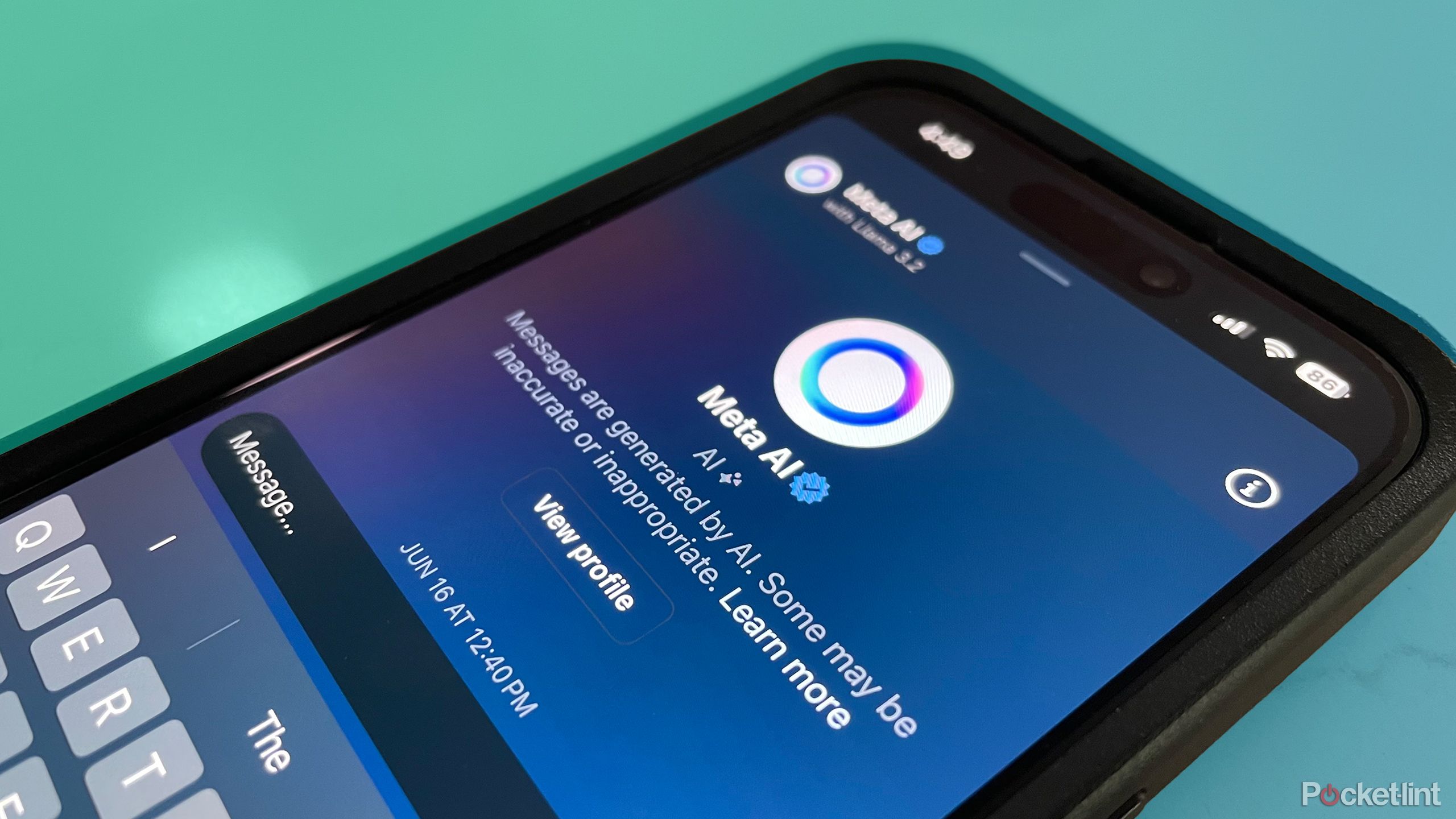
Related
Meta reportedly wants to take over search and is using AI to do it
Meta is reportedly developing its own AI search engine that can be used in its AI Chatbot.
If you’re in the market for a pair of smart glasses in 2024/2025, you really can’t go wrong here
I think Meta still has room to improve and refine the user experience with Meta Ray-Ban. However, it’s hard to ignore the level of quality across the frames themselves and the hardware underneath. For anyone who currently wears glasses and is looking to upgrade to a pair of smart glasses potentially, Meta Ray-Bans are the standard as far as I’m concerned, even compared to the XReal Air 2 and Amazon Echo Frames. That all being said, if you don’t wear glasses already or have an immediate desire to adopt the hands-free tools available, there’s no need to rush out and purchase a pair. I hope that with every new generation, Meta Ray-Bans can become more accessible with faster processing for content capture and AI-powered features.


Related
Meta has invested millions in AR glasses but do we really want them?
Are the Orion AR glasses what consumers crave or just another Google Glass?


